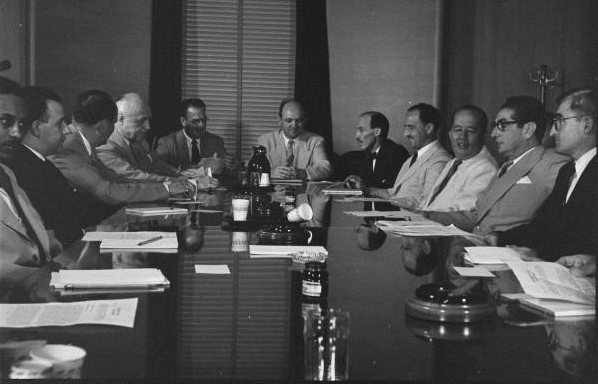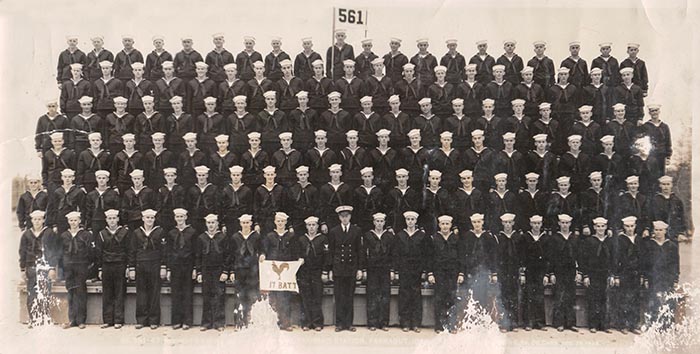
Have you ever been at a meeting where all you can think about is how much more productive you’d be working alone at your desk? And how much of the company’s money is swirling down the drain while your co-workers surreptitiously check their Blackberries under the table? And how you wish you had made like the crew of the Enola Gay and carried a cyanide capsule with you?
People hate meetings. But it’s not the meetings themselves that are inherently pencil-in-eye inducing, it’s how meetings are run. Without a real leader, meetings can become unproductive and inefficient, not only wasting time and money, but sapping office morale. But it doesn’t have to be this way.
A man knows how to lead. He knows how to run a meeting that starts on time, ends on time, and gets things done. Here’s how.
Establish whether the meeting is absolutely necessary. Before you even think about scheduling a meeting, figure out if you really and truly need one. You should only call for a meeting if:
- The information to be discussed could not be disseminated via telephone or email. Meetings should never be called when only a one-way information exchange is needed.
- There are clear benefits to having everyone together in one room.
Set an agenda. This is crucial for a productive meeting. Without a clear, pre-set agenda, a meeting will drift off-topic and interminably drag on. And then when you’re done and everyone has dispersed, you’ll suddenly remember an important point you forgot to bring up, thus necessitating another meeting.
Type up an agenda for the meeting with a specific list of what items will be discussed and in what order. Email everyone a copy a day or two before the meeting to give them a heads up about what to expect and some time to start thinking about the issues and what they’d like to contribute. People can also make additions and objections to the agenda before the meeting instead of at the meeting. Make it clear in your message that if it’s not on the agenda, it can’t be discussed at the meeting. Paste the agenda into the body of the email. People don’t open attachments.
Make sure key people will be in attendance. If you call a meeting when you know key people can’t come, you’ll basically spend the meeting trying to talk around them and saying, “Well, we’ll have to wait to see what Mike has to say before we can start on that for sure.” Decisions get deferred, more meetings are necessitated, and you waste time afterwards bringing the MIA people up to speed. Arrange a meeting for when you know key people can make it.
Talk one on one with people to resolve pet issues before the meeting. Even if you make it clear that only agenda items can be discussed during the meeting, there are always people who try to break this rule and bring up their favorite pet issue. These people can get the meeting way off track. If you know someone has an issue that doesn’t really affect the group, talk to them one on one before the meeting to preemptively resolve the problem and nip their meeting interruption in the bud.
Bring bagels or donuts. The only thing that makes meetings a bit more palatable is something for the palate. Bring something for people to munch on.
Set up the chairs in a U-shape. There are 3 different ways to set up a meeting room: the U-shape, a circle, or lecture style. Lecture style, with everyone sitting side by side and facing the front, gives the leader complete control, but doesn’t allow for any collaboration. The circle lends itself to a feeling of equality and plenty of group-think, but with no clear leader, the discussion can easily devolve into a bunch of flapdoodle. The U-shape is the best compromise; it gives people a chance to share and collaborate, but the guy at the top of the U is recognized as the leader and can keep things on track.
The circular, uber-democratic, let’s hug it out style has been in vogue for awhile now, and it makes everyone feel important, but it’s also the reason meetings get off-track and become totally unproductive. The truth is that not everyone does have something important to say, and a leader is crucial in keeping things focused on the things that matter.
Start on time. And don’t recap for late people. Doing so legitimizes lateness and disrespects those who made an effort to show up on time.
Begin with what was accomplished since the last meeting. “Last time we talked about x and here’s how it’s been implemented.” If you don’t want people to feel like meetings are pointless, you have to offer some proof that they’re not.
Get to the heart of the matter. Remember, meetings are not for the one-way exchange of information. If there’s background information people need to know in order to engage the issues, circulate this information in a flier or email before the meeting so everyone is up to speed and you can skip the milk and jump right into the meat. At the meeting, succinctly describe the issue or problem and quickly move into coming up with a solution or course of action.
If people haven’t prepared for the meeting by reading up on the background information or otherwise, then dissolve the meeting. Moving forward will just be a waste of time. This takes some balls, but people will come ready next time.
Come up with a tangible solution. Many times during a meeting when people are unable to attain a consensus, the issue is tabled for the time being, which means of course, that there will inevitably be another meeting in the future to again address the problem. So whenever possible, preempt these future meetings by coming up with a concrete solution and specific actions for people to take. This is where your quality as a leader is tested-can you break through the stalemate, broker a compromise, and come up with a solution?
Control the discussion. Perhaps a leader’s most important job is keeping the discussion productive and on topic. There are several ways to do this:
- Get feedback from everyone. Having a clear leader in a meeting does not stifle feedback and collaboration, it ensures it. Without a leader, the opinionated loudmouths, who do not necessarily have the best ideas, will dominate the discussion, while the more reticent can’t get a word in edgewise. Draw out the quiet people by asking questions like, “Jane, you’ve had a lot of experience with that company, what is your opinion of their proposal? Of course, some people are quiet because they have nothing insightful to offer. A good leader knows which is which.
- Ask good questions. Sometimes people can’t come up with the right solution simply because the leader isn’t asking the right questions. Ask questions that will really make people think and look at something from another angle.
- Shut down disruptions. It’s perhaps the hardest part of the job, but a leader must tactfully shut down people who are getting off-track, whether they’re simply going on and on or they’re just way off-topic. Wait for the bloviator to take a breath and then say something like:
- “That might be a good subject to discuss another time, but let’s get back to talking about X.”
- “Why don’t the two of us discuss that after the meeting.”
- “Good point but we need to get back to agenda.”
- “Let’s table that for now but we can put it on the agenda for next time.”
- “I’ve just signaled for Tom to render you unconscious with a blow dart to the neck.”
You don’t want to come off as a jerk and cut them off, but it’s best to err on the side of having a firm hand. While the windbag may be a bit chastised, everyone else in the meeting will inwardly be applauding you.
Summarize the meeting. At the end of the meeting, quickly tick off a list of everything you have accomplished and resolved to do. Delegate tasks and make sure everyone is absolutely clear on what their individual responsibilities are. Don’t ask for “other business.” You’re just opening a can of worms. Remember, if it’s not on the agenda, it’s not going to be discussed.
End on time. If you want people’s attitude towards meetings to change, then they have to know they can trust them to start and end at the specified time. Your task as the leader is to set the pace and keep things moving so you accomplish your goals within the set time.
Follow up and make sure things gets done. This is just as important as the meeting itself. Remember, at the start of the next meeting, you’re going to have to summarize what was accomplished since the last one. You better have something to say.
Of course, if you’re not the leader, than there isn’t much you can do to curb meeting inanity. But meetings are a great place to show your potential leadership skills. Come on time, be prepared with good ideas, and hopefully you’ll soon be the guy standing at the top of the U.






